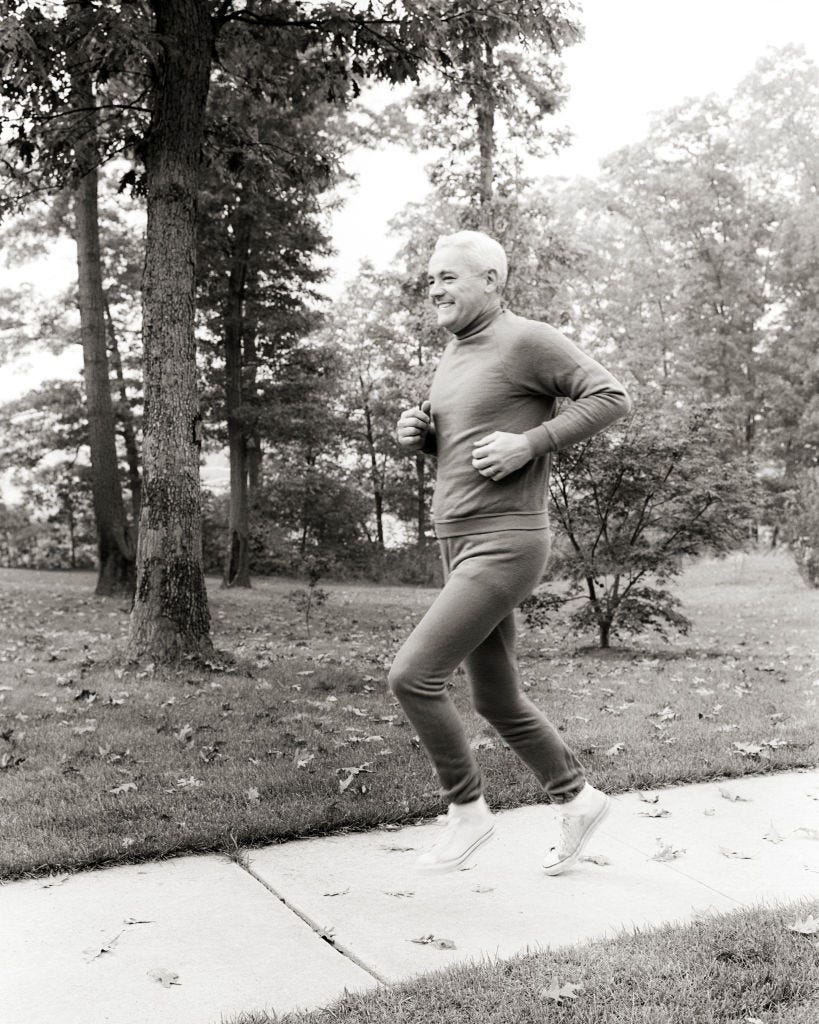Dopamine Hit
In this week's Rundown, a wearable measures body composition, the good feelings from exercise continue even on your days off and distraction is the key to an easier run.
The Rundown
Watch Your Body Composition. Health and wellness data tracking for the Apple Watch just got more sophisticated with the new Aura Strap 2 band, a wearable that uses bioimpedance analysis (BIA) to send fat, muscle and hydration measurements.
Here’s how it works: You touch the heel of your palm to the electrodes on the back of the band and wait 30 seconds. The BIA sensors send a weak electric current through your body to calculate body fat, muscle mass, minerals and water. Aura says the process captures 16 times more data points than the original device, which improves accuracy to 95 percent of a DEXA scan.
You can view your measurements in the Aura App, which creates a Bioimpedance Vector Analysis (BIVA) map of your results. The app also syncs with Apple’s HealthKit.
Dopamine Hit. A new study (read the abstract) published in the Journal of Neuroscience and led by researchers at NYU Grossman School of Medicine, has shown that running increases levels of a chemical involved in brain cell growth, which boosts the release of the “feel good” hormone dopamine.
Scientists have long known that regular running raises dopamine activity in the brain and may protect nerve cells from damage. Previous research has also connected exercise to increases in a dopamine-triggering chemical called brain-derived neurotrophic factor (BDNF). Both BDNF and dopamine levels have been shown to improve learning and memory. This new study is the first to uncover how all these factors interact and offers insight into the longer-term behavior of dopamine and its effects on the brain after exercise stops.
Analyzing mice running on a wheel for 30 days, the researchers found a 40% increase in dopamine release in the part of the brain involved in movement, compared to levels in mice that did not exercise. The running mice also had a nearly 60% increase in BDNF levels. The dopamine release remained elevated even after a week of rest.
Lead author, Guendalina Bastioli says, “Not only do these results help explain why exercise makes you move, think and feel better, they also show that these benefits continue even if you do not work out every day.”
Distract Yourself. A recent study suggests that paying close attention to your body’s mechanisms (stride, breath, form) during running may not be the best way to make it feel easier or to improve your performance.
Published in the Journal of Motor Learning and Development, the research explored whether a small group of novice female runners would perform more effectively if they were distracted versus if they thought about what was happening with their bodies.
The women ran for six minutes at a time at 70 percent of their top speed while the researchers monitored their oxygen consumption, lactate in their bloodstreams, and their feelings about the difficulty of the run. They completed four runs. In one, they thought about the muscles in their feet. In another, they counted steps. In a third, they counted backward by threes, which took their minds off their bodies but kept them thinking. In a final run, they watched a video of a basketball game, keeping their attention entirely off running.
Looking at the women’s physical and emotional reactions to each run, the researchers found that they consumed the least oxygen, produced the least lactate and felt the least strained when they were the most distracted watching the game. When the women paid attention to their muscles, they felt their runs were the hardest. The other strategies were in between.
Because the study analyzed short runs by young, inexperienced women, it doesn’t tell us if the same results would apply to men, older people, longtime runners or people doing other endurance sports. However, Jared Porter, a professor of human movement at the University of Tennessee who oversaw the study, says that “there is no scientific reason” to think that the results would not be similar.
Replay
This week’s vintage moment in fitness culture is brought to you by running apparel, 1970’s style. And yes, those are Converse All Stars. Ouch. Photo credit: ClassicStock/Getty Images.




